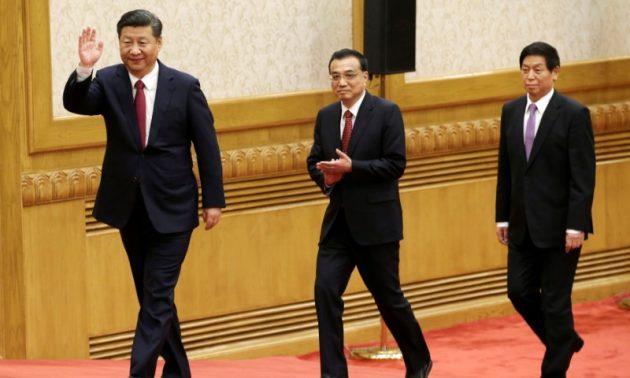Three key economic policy themes sounded at China's Party Congress
Important economic policy themes identified at this month's 19th National Congress of the Communist Party of China are largely amplifications of policies already announced in various forms.
Reaffirmation of "supply-side" reforms will continue with the elevation of Liu He to the Politburo. Liu designed the "supply-side reform" program announced in the People's Daily in Jan. 2016, including reduction of leverage, gradual shrinkage of "zombie companies," reflation of producer prices and industrial profits, and micro-economic reforms.
Micro-economic reforms include backing for expansion of e-commerce and e-finance, tax reform (most importantly the introduction of a value-added tax to replace the old company tax), and spinoff of state-owned enterprise assets to private companies. Liu has directed government economic policy for the past two years and his elevation to the Politburo gives him the added authority of the Communist Party.
Suppression of excess leverage and speculative excesses. People's Bank of China Governor Zhou Xiaochuan warned October 19: 'If there are too many pro-cyclical factors in the economy, cyclical fluctuations are magnified and there is excessive optimism during the period, accumulating contradictions that could lead to the so-called Minsky Moment.'
Measures are likely to include a modest rise in interest rates now that real interest rates (term yields minus PPI change) have turned negative; continued shrinkage of the outstanding volume of Wealth Management Products and other "shadow finance" vehicles; and tighter controls over the booming property market, as PBOC research head Xu Zhong announced Sept. 1.
The Belt and Road Initiative was affirmed as centerpiece of economic policy. China sees the $1 trillion infrastructure investment program as a driver for high-value-added exports through Eurasia. New direct rail links between China and, respectively, Turkey and Iran have opened during the past several months, and the initiative is likely to contribute to continued recovery in China's exports. Export growth was negative through most of 2015 and 2016 but rose 9% YOY as of September 2017.
The DailyBrief Must-reads from across Asia - directly to your inbox Comments
Legal Disclaimer:
MENAFN provides the
information “as is” without warranty of any kind. We do not accept
any responsibility or liability for the accuracy, content, images,
videos, licenses, completeness, legality, or reliability of the information
contained in this article. If you have any complaints or copyright
issues related to this article, kindly contact the provider above.
Most popular stories
Market Research

- Kucoin Presents Kumining: Embodying Simple Mining, Smart Gains For Effortless Crypto Accumulation
- BILLY 'The Mascot Of BASE' Is Now Trading Live On BASE Chain
- Primexbt Launches Empowering Traders To Succeed Campaign, Leading A New Era Of Trading
- United States Animal Health Market Size, Industry Trends, Share, Growth And Report 2025-2033
- United States Lubricants Market Growth Opportunities & Share Dynamics 20252033
- Japan Buy Now Pay Later Market Size To Surpass USD 145.5 Billion By 2033 CAGR Of 22.23%






















Comments
No comment